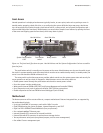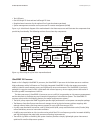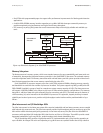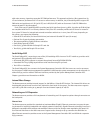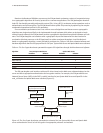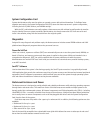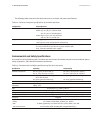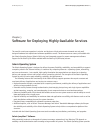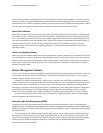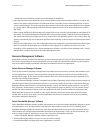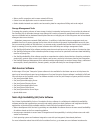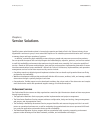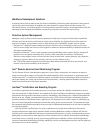
ALOM supports the following remote system management capabilities:
• Host status monitoring and automatic server restart: ALOM monitors environmental conditions, as well as the
status of the power supply and fans in the Netra 240 server. It provides a service indicator and event or failure
notice to administrators. The service processor also provides an automatic server restart (ASR) function triggered
by a system alarm. When properly configured, ASR can restart the server if it becomes unresponsive (a watch-
dog reset).
• Power control: ALOM gives administrators full control of the server, including remote power-on and power-off of
the system. The System Management Controller ASIC utilizes auxiliary power, enabling continuous monitoring
and control functionality even when the server is powered off or the operating system is not running. When the
system is operational, the service processor performs event reporting via the serial port or Ethernet ports that it
controls.
• Software accessible alarms: Four user-configurable alarms are available for specialized applications that require
them. For example, an application can set an alarm to be triggered if an important server process is not
responding. If this condition occurs, remote management software—possibly custom-developed code—notices
that the alarm condition has been set and takes appropriate action.
Resource Management Software
Automation is also key for effectively managing resources among numerous servers in Telecommunications opera-
tion centers. Sun provides the tools administrators need to model and automatically maintain resource levels to
keep servers within healthy operational constraints and maintain service level agreements.
Solaris Resource Manager Software
Driven by the increasing popularity of applications and network service providers, customers are demanding serv-
ice level agreements to ensure processing and that storage and throughput resources will be available during
periods of peak usage. At the same time, administrators must strive to ensure that meeting the demands of one
user does not unfairly impact another.
Solaris Resource Manager software, integrated into the Solaris Operating System, allows system managers to
allocate resources among individual tasks and users in a structured, policy-driven fashion. With Solaris Resource
Manager software, administrators can proactively allocate, control, and monitor system resources, such as CPU
time, processes, virtual memory, connect time, and logins within a system or domain. This fine-grained control
enables the system manager to better predict and guarantee the level of service available to a particular task.
When additional resources are required to meet urgent demands, allocations can be easily shifted to provide
needed levels of service. As a result, users and applications receive more consistent levels of service, enabling
even higher application availability.
Solaris Bandwidth Manager Software
Solaris Bandwidth Manager software enables administrators to control the network bandwidth assigned to partic-
ular applications, users, and departments that share the same intranet or Internet link. By installing Solaris
Bandwidth Manager software on a network’s major links and application servers and setting consistent policies,
administrators can evenly distribute bandwidth throughout the organization. Traffic can also be prioritized, pre-
venting a small number of applications or users from consuming all available bandwidth.
Solaris Bandwidth Manager software enables organizations to:
• Provide differentiated classes of service to users and bill accordingly
• Guarantee bandwidth to high-priority users, applications, or servers
Sun Microsystems, Inc. Software for Deploying Highly-Available Services P17



